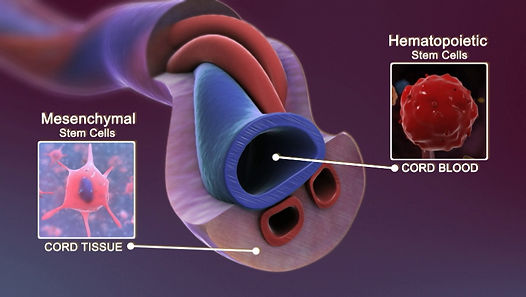
Stem Cells: The Building Blocks of Life
Umbilical Cord Stem Cells
What are they?
Umbilical cord stem cells are found in the umbilical cord and come in two forms: cord blood stem cells and cord tissue stem cells. Umbilical cord stem cells are multipotent and easily accessible. They are harvested directly from the umbilical cord post-birth and cause no harm to the baby or the mother. Cord blood contains haematopoietic stem cells (HSCs), which are also found in the bone marrow. HSCs can give rise to all types of blood cells such as red cells, white cells, and platelets. Since cord blood stem cells are less mature than bone marrow stem cells, they have more potency. Cord tissue contains mesenchymal stem cells (MSCs) which can give rise to support tissues such as bone, cartilage, fat, and muscle. Both cord blood and cord tissue transplants incite less immune system response than bone marrow transplants do. The use of these stem cells boosts the likelihood of successful transplantations.
How can they be used?
Cord blood stem cells can treat blood cancers such as leukemia. Since cord blood is less likely to be rejected by the host body, cord blood transplant can serve as an alternative to bone marrow transplants. Furthermore, cord blood does not have to be as exactly matched with the patient's HLA (human leukocyte antigen) as bone marrow does. The study of MSCs is still relatively new but scientists are investigating how they can be used to treat bone fractures, cartilage damage, heart disease, and skeletal disease. Cord tissue stem cells have not yet been used in medical therapies but can potentially treat type 1 diabetes, lung cancer, and Parkinson's disease. Because umbilical cord stem cells can save lives, cord blood and cord tissue banks provide a place for families to store their baby's stem cells for future use.
What are the challenges?
Unfornately, cord blood does not contain as many HSCs as one bone marrow donation. Since adults require a greater supply of HSCs, adult patients currently receive blood transplantations from two umbilical cords.
